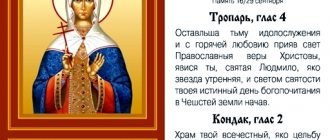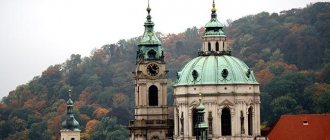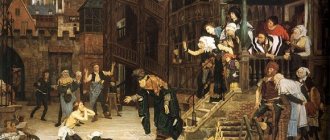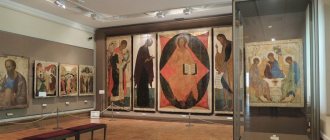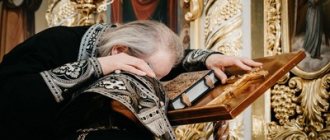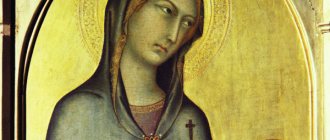Many famous capital attractions are concentrated in the historical district of Vinohrady, and one of the most famous is the Church of St. Ludmila (Kostel svaté Ludmily). Saint Ludmila was the first Czech saint. Her parish was founded in November 1884, that is, several years before the church itself appeared. The cornerstone of the future temple was laid on November 25, 1888 - this date is considered the official beginning of construction, which was completed in 1892. Thus, the Catholic religion gained another parish in the country, which later became one of the most famous and revered in the Czech Republic.
From the history of the construction of the church
The project of the majestic Church of St. Ludmila, a currently operating church belonging to the Roman Catholic Church, was developed by Yosef Motzker, a famous architect and restorer at that time. Other eminent Czech architects, sculptors, and artists also joined in the construction work and interior design: Josef Vaclav Myslbek, Josef Capek, Frantisek Jenišek, Antonin Prochazka. On the facade of the church there are statues of saints Ludmila and Wenceslas, the author of the sculptures is J. V. Myslbek. The author of the sketch on which the main altar was made is the architect Antonin Turek. The consecration of the temple took place on October 8, 1893, the ceremony was performed by the Archbishop of Prague Francis von Paula-Schönborn and two bishops. In total, the costs of constructing the church, including construction work and interior decoration, amounted to 369 thousand 922 Austrian guilders.
Church of St. Ludmila
Kostel svate Ludmily
The majestic Catholic Church of St. Lyudmila is a functioning church that belongs to the Roman Catholic Church and was founded in 1888. Almost all the Czech architects, sculptors and artists known at that time took part in the construction of the building and the creation of the interior decoration of the temple.
Saint's life story
The construction of the Catholic Church in Prague was completed and consecrated in 1893 in honor of the first Christian saint, Ludmila of Bohemia, who died a martyr's death for her beliefs. She is considered the patroness of her native Czech land, the intercessor of mothers, grandmothers, Christian educators and teachers.
Blessed Lyudmila was born into the princely family of the Pshowan family in the 9th century. After her marriage, together with her husband Prince Borzhiva I, she believed in Christ and received Holy Baptism from St. Methodius. Subsequently, the couple began to build churches throughout the principality and lead an educational lifestyle. A number of historical documents indicate that the young princess was quite educated and knew several foreign languages, including Greek and Latin.
After the premature death of her husband, she distributed her property to the poor and endured the vicissitudes of fate with complete devotion to God's will. She raised her two sons and four daughters in Christian traditions. The youngest son of Princess Vratislav ascended the throne after the death of his father, but Lyudmila actually ruled the state. In the memory of the people, she was a wise ruler, led a righteous life, cared for the sick and disadvantaged. Prince Vratislav remained on the throne for another thirty-three years and also died. Then, at the age of 18, the grandson and pupil of Princess Lyudmila, Vaclav, the son of Vratislav, came to power.
According to legend, Wenceslas’s own mother, Princess Dragomira, was not a true Christian. Taking advantage of the young ruler’s inexperience, she began to instill old pagan traditions and morals into her people, hated her mother-in-law for the Christian upbringing of her son and ordered to get rid of blessed Lyudmila at all costs.
As a result of the conspiracy, the princess was strangled by the pagans while praying with her own veil. The saint was then 61 years old. The Great Martyr Lyudmila of Bohemia was canonized in the 12th century.
Exterior architecture of the temple
The building was built in the neo-Gothic style according to the design of the architect Josef Motzker. It is a brick basilica with two 60-meter towers at the edges, each of which contains two bells. This huge fantastic structure under the Gothic cross vault is perceived from the outside as terrifying, majestic and dark. At the same time, the pointed arches, elongated and pointed towards the top, express the idea of the aspiration of the Gothic temple upward. The turrets, topped with sharp spiers, also actively interact to create a majestic and sublime image of the church, emphasizing its verticality.
The facade of the building is decorated with carved details and multi-colored stained glass lancet windows, which emphasize the cult and religious theme of the architectural structure. The main entrance to the Catholic church is crowned with heavy massive doors decorated with strict ornaments. Above the portal there is a large window in the shape of a rose. The decoration of the tympanum is a relief image of Christ, the holy martyrs Ludmila and Wenceslas by the sculptor J. Myslbek. And in the side aisles and on the pediments there are figures of saints who patronized the Czech Republic at different times, created by the hands of sculptors J. Myslbek and A. Prochazka.
Interior
The interior decoration of the church contrasts with the austere and dark facade of the building. The temple is very solemn and bright. Graceful floral designs are applied to the Gothic ceiling vaults.
Amazingly beautiful white ornamented columns decorated in the form of crosses, elegant bright frescoes in orange, blue and gold tones on the walls and lancet semi-arches, geometric and ethnic patterns, multi-colored stained glass windows on lancet windows - you can feel the love and taste inherent in the Czechs in everything.
The interior of the church was created by famous painters J. Capek and F. Jenishek, and sculptor A. Prochazka. The artist A. Turek created sketches of the main altar. The church is open to parishioners, visitors and tourists during daily services.
Church of St. Lyudmila today
The Catholic church has the appearance of a three-nave neo-Gothic basilica with a cruciform transept and two towers of 60 meters each. The length of the main nave is 50 meters. Both towers of the church are equipped with two bells. The location of the temple is Peace Square, in the area of which it dominates. The central portal is located above the main entrance. The tympanum of the portal is decorated with a relief by Joseph Myslbek entitled “Christ blessing St. Wenceslas and St. Ludmila.” The tympanum is crowned with other works by the artist, these are bas-reliefs of God the Father and the Holy Spirit depicted in the form of a dove. The gable of the main portal is decorated with a sculptural statue of the saint herself, made by L. Shimek. The interior interior is also impressive. For example, stained glass windows painted with figures of saints. The main altar is 16 meters high and decorated with stones, both precious and semi-precious. You can visit the temple and see all its splendor during a tour of Prague. Welcome to our city!
MegaTour cz+ Google+author
read more news | go to Home www.megatour.cz
Lyudmila's life
The future blessed Lyudmila was born in the 9th century into the family of princes Pshovanov. She married Prince Borzhivoj I and together with her husband believed in Jesus. Saint Methodius himself baptized the couple. Having converted to Christianity, the princely couple began educational and missionary activities, an important part of which was the construction of churches throughout their possessions. A good education helped the young princess to engage in enlightenment. According to historical documents, the girl spoke several foreign languages, including Latin and Greek.
When Borzhivoy died, the widowed Lyudmila distributed her wealth to the poor and surrendered to God's will, meekly accepting the blows of fate. She had four daughters and two sons - the woman raised them in a Christian spirit. Later, Vratislav, the youngest son, ascended the princely throne, but this was mostly a formality: in fact, Lyudmila herself ruled the country. In the memory of the Czechs, she remained a fair ruler who never forgot about the poor and at the same time led a righteous lifestyle. After spending more than thirty years on the throne, Vratislav died, after which power was in the hands of his son Vaclav, grandson and pupil of Lyudmila.
Legend has it that Dragomira, Vaclav’s mother, was not a true Christian, opposed the Christian upbringing of her son and hated the church for it. Seeing the young prince’s inexperience, Dragomira undertook to restore pagan traditions and began to inculcate appropriate morals, forgotten by the Czechs during the years of Christianity. To achieve this goal, she needed to eliminate blessed Lyudmila.
A conspiracy was hatched, as a result of which the pagans strangled Lyudmila with her own veil right during prayer. The woman was 61 years old at the time. Later, the princess was recognized as a great martyr, and in XII she was officially canonized.
Temple interior
The gloomy impressions left by the exterior of the building disappear once you get inside. The space of the temple breathes solemnity and light; the Gothic ceiling vaults are decorated with elegant images of flowers. Multi-colored stained glass; pointed semi-arches and walls decorated with frescoes with dominant blue, gold and orange colors; beautiful white columns with ornaments, decorated with crosses; patterns of folk and geometric nature - in all these elements of interior decoration one can see the good taste and love with which the space was decorated.
Famous artists F. Jenishek and J. Capek, as well as sculptor A. Prochazka, worked on the interior of the temple. Sketches of the central altar were created by the artist A. Turek. Divine services are held in the church every day, and at this time its doors are open not only to parishioners, but also to ordinary visitors and curious tourists.
Temple of the Holy Martyr Lyudmila
Chrám svate Ludmily
The Church of the Holy Martyr Lyudmila, Princess of Bohemia on Siberian Square in Prague is by no means a tourist place and you can only get into it during services. Since its consecration, the church has been considered the main temple of the Russian Embassy in the Czech Republic.
The schedule of services is available on the website, updated a month in advance.
Architecture
From the outside, only a sign and an icon above the entrance remind of the spiritual purpose of the round structure. The area of the premises is approximately 480 m2. The first stage of the building's reconstruction, which involves furnishing the interior, is almost complete. At the second stage it is planned to build domes and a bell tower. However, it is not yet clear how it will be possible to combine Soviet architecture with traditional Orthodox domes.
The spacious room turned out to be surprisingly well oriented to the east, so practically nothing had to be altered to create the altar. A traditional wooden altar with carved elements is located at the back of the hall, with an altar in front of it. The central place on the altar iconostasis is occupied by the faces of Jesus, the Most Holy Theotokos and the patron saint of St. Lyudmila, the remaining parts are filled with biblical scenes and images of archangels. On the walls there are a number of icons with the faces of St. Nicholas, Anna, Peter, Paul and other Orthodox saints. The shape of the room is emphasized by a huge round chandelier with a lace pattern and imitation candles, occupying the center of the ceiling.
Story
Saint Ludmila is considered the patroness of the Czech Republic. Together with her husband, Prince Borzhivoj, she contributed to the spread of Orthodoxy among the Czechs and was killed by representatives of the pagans. In 2004, on the day of celebrating the anniversary of the St. George Church at the Russian Embassy, an icon of the first Czech saint with a particle of her relics was transferred for the foundation of the future temple.
The church occupies the premises of the former exhibition hall of the trade mission, built in the 1970s and now transferred by order of the President of the Russian Federation for the use of the Russian church. In Soviet times, the premises hosted exhibitions of construction and agricultural machinery, and recently a small exhibition of vintage cars could be seen here.
It is the third Orthodox church of the Moscow Patriarchate in the Czech Republic and was consecrated at the end of December 2012. The current church of St. George the Victorious in Prague and the Church of St. Peter and Paul in Karlovy Vary, consecrated in 1999 and 1897 respectively, also belong to the Russian Orthodox Church.
Before the consecration of the church, the Church of St. George the Victorious, located in the courtyard of the Russian embassy, was considered the embassy church. However, the restricted security of the embassy territory and the small area of the temple created some inconvenience for believers. That is why a large room was chosen, which today accommodates up to 1000 people. It is planned that in the future a Sunday school and a spiritual center will be opened.
The opening of the Church of St. Ludmila, Princess of Bohemia, became a significant event in the life of the Russian community in Prague. Local believers now have the opportunity to freely visit Prague’s largest Orthodox church any day.
